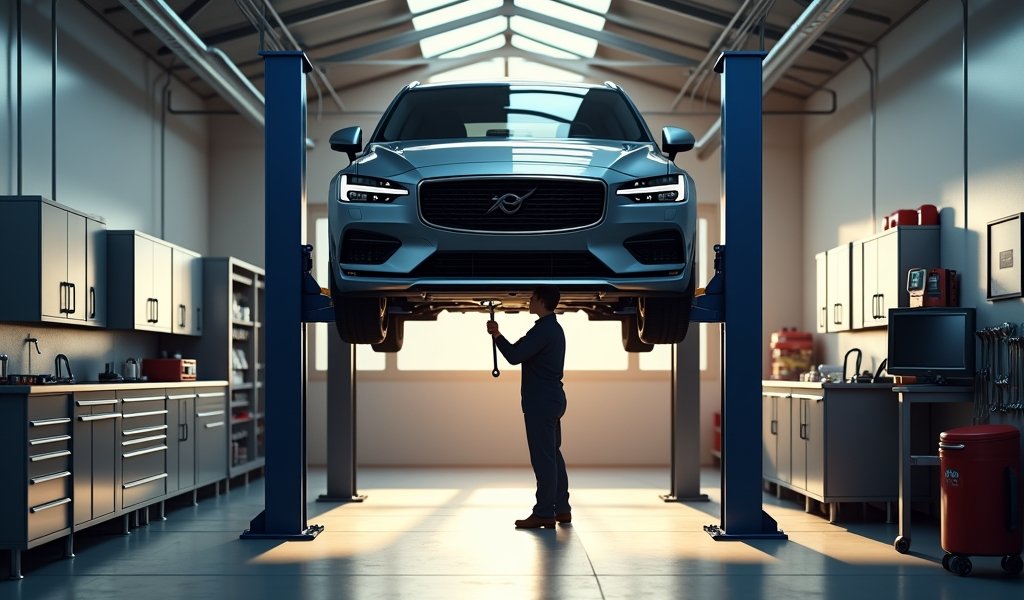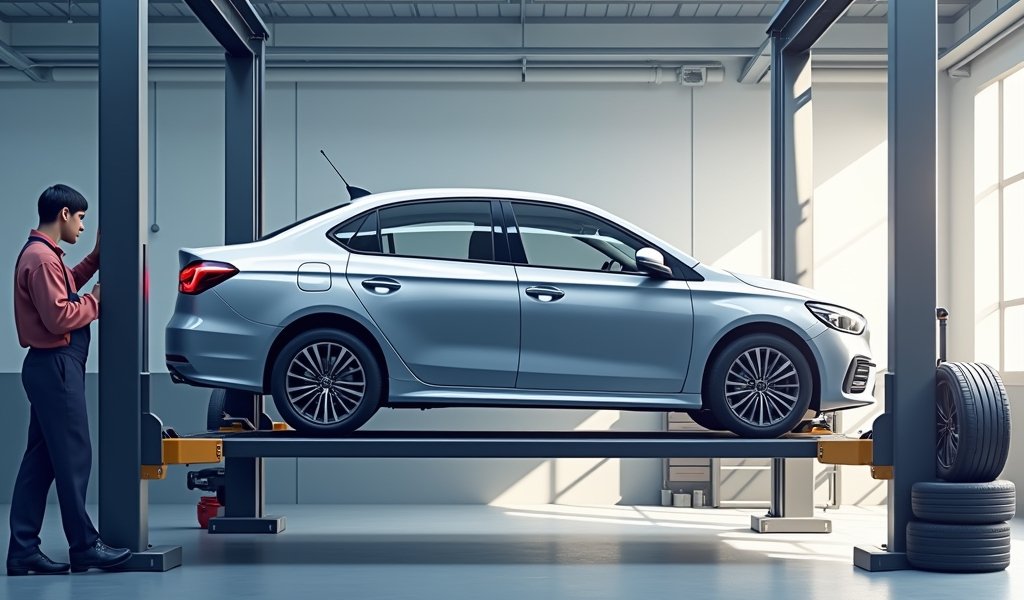Overview
This article outlines eight critical car maintenance mistakes to avoid, including neglecting manufacturer service schedules, using incorrect fluids, ignoring warning lights, attempting DIY repairs without proper knowledge, overlooking tire maintenance, choosing the wrong service provider, and skipping preventative maintenance. Following proper maintenance practices not only prevents costly breakdowns but also extends vehicle lifespan beyond 200,000 miles while preserving performance, safety, and resale value.
Table of Contents
- Introduction
- Neglecting Manufacturer’s Service Schedule
- Using Incorrect Fluids
- Ignoring Warning Lights
- Attempting DIY Repairs Without Proper Knowledge
- Overlooking Tire Maintenance
- Selecting the Wrong Service Provider
- Skipping Preventative Maintenance
- Conclusion
- Frequently Asked Questions
Introduction
The relationship between you and your vehicle requires regular attention and proper care—much like any valuable relationship in life. After 25 years under the hood, I’ve seen firsthand how common car service mistakes can dramatically shorten a vehicle’s lifespan and empty your wallet faster than a fuel leak.
Many drivers unintentionally sabotage their vehicles through easily avoidable maintenance errors. These mistakes might seem insignificant today, but they compound over time, leading to expensive repairs and premature breakdowns.
Modern vehicles are engineering marvels capable of lasting well beyond 200,000 miles when properly maintained. As someone who’s rebuilt countless engines that failed prematurely due to simple maintenance oversights, I’m passionate about helping you avoid these costly pitfalls.
In this guide, we’ll explore the most common car service mistakes and provide practical solutions to help extend your vehicle’s life. Whether you drive a brand-new SUV or a beloved older sedan, these insights will help you implement a complete car service approach that saves you thousands while keeping you safely on the road.
Neglecting Manufacturer’s Service Schedule
Your vehicle’s service manual isn’t just decorative literature for your glove compartment—it’s a comprehensive maintenance roadmap created by the very engineers who designed your car. Unfortunately, ignoring these carefully calculated service intervals ranks among the costliest mistakes I regularly witness.
Manufacturer recommendations are based on extensive testing under various driving conditions. They know exactly when your timing belt needs replacement, when transmission fluid degrades beyond effectiveness, and when your fuel system requires cleaning.
Consider this: postponing that 60,000-mile timing belt replacement might save you $800 today, but when it snaps unexpectedly, you could face a $3,500 engine rebuild. I’ve rebuilt dozens of engines destroyed by this single oversight.
To stay on track with your manufacturer’s schedule:
- Create digital calendar reminders for upcoming service milestones
- Keep a simple maintenance log in your vehicle or smartphone
- Schedule your next service appointment before leaving the shop
- Consider maintenance tracking apps that alert you to upcoming needs
Most modern vehicles divide maintenance into minor services (typically every 5,000-7,500 miles) and major services (every 30,000-60,000 miles). Following this schedule isn’t just about preventing breakdowns—it’s about preserving your vehicle’s performance, efficiency, and resale value.
Remember: your manufacturer’s schedule changes based on driving conditions. If you frequently drive in extreme temperatures, tow heavy loads, or make primarily short trips, you’ll need to follow the “severe service” schedule, which requires more frequent maintenance.

Using Incorrect Fluids
Your vehicle relies on specialized fluids to function properly, each formulated for specific operating conditions and component materials. Using the wrong fluid is like putting orange juice in your coffee maker—it might flow through the system, but the results will be disastrous.
Modern engines have precise tolerances that require specific oil viscosities and ratings. Using conventional oil in an engine designed for full synthetic can accelerate wear on critical components. I recently diagnosed a failed turbocharger that was directly caused by using the wrong oil type—a $2,300 repair that stemmed from a $20 mistake.
Transmission fluid mistakes are equally costly. Many newer vehicles use low-viscosity fluids with special friction modifiers. Using universal transmission fluid in these systems can cause erratic shifting, overheating, and eventual transmission failure. According to the Car Care Council, fluid-related issues account for a significant percentage of avoidable transmission failures.
Cooling systems are particularly vulnerable to fluid errors. Those different colored coolants aren’t just for show—they represent different chemical formulations designed for specific metals and gasket materials. Mixing incompatible coolants can create a gel-like substance that restricts flow and causes catastrophic overheating.
To avoid these expensive mistakes:
- Always consult your owner’s manual for exact fluid specifications
- Verify that replacement fluids explicitly meet manufacturer requirements
- Don’t assume “universal” products are truly universal for your specific vehicle
- Keep records of which fluids have been used in your vehicle
- When in doubt, consult with a specialist for your make and model
The few extra dollars spent on the correct, high-quality fluids pay enormous dividends in reliability and longevity. I’ve rebuilt too many engines and transmissions that failed simply because someone tried to save a few bucks on fluids.
Ignoring Warning Lights
Those illuminated symbols on your dashboard aren’t holiday decorations—they’re sophisticated diagnostic alerts from your vehicle’s monitoring systems. Yet many drivers treat these warnings like background noise, turning up the radio to drown out their concerns.
The check engine light alone can indicate over 200 different potential issues, ranging from a loose gas cap to imminent engine failure. Other critical indicators include the oil pressure warning, temperature warning, and brake system alerts. Ignoring these signals often transforms fixable minor issues into major mechanical failures.
As a mechanic who’s diagnosed thousands of warning light issues, I can attest that timing makes all the difference. A flashing check engine light indicates an active misfire that’s damaging your catalytic converter with every mile driven. What could have been a $150 spark plug replacement becomes a $1,200 catalytic converter job simply because someone drove “just a little further.”
Some warning lights demand immediate attention:
- Oil pressure warning: Pull over immediately and shut off the engine
- Temperature warning: Stop driving as soon as safely possible
- Brake system warning: Proceed with extreme caution to a service facility
- Battery/charging system warning: Drive directly to a service center before you lose power
Even seemingly minor warnings deserve prompt attention. That ABS light might seem inconsequential until you need to make an emergency stop in the rain. The airbag warning might not affect daily driving, but it could mean the difference between life and death in a collision.
Modern vehicles make it easier than ever to address warning lights promptly. Many auto parts stores offer free diagnostic scans, and affordable Bluetooth OBD-II scanners let you check codes yourself before deciding on your next steps. Understanding these maintenance signals is vital for every driver.
Attempting DIY Repairs Without Proper Knowledge
The rise of online tutorials has inspired many car owners to tackle repairs themselves. While I wholeheartedly support learning mechanical skills, I’ve also witnessed the costly aftermath when enthusiasm outpaces expertise.
Consider the seemingly simple oil change. Without proper disposal procedures, you could face environmental fines. Without the correct torque specifications, you might strip an oil pan thread or leave the drain plug too loose, causing catastrophic oil loss while driving. I once rebuilt an engine that seized because a DIY oil change left the filter gasket double-stacked—a $4,000 lesson in thoroughness.
More complex jobs carry even greater risks. Brake repairs done incorrectly can lead to complete brake failure. Timing belt replacements require precise tensioning and alignment—get it wrong, and you might bend valves or damage pistons the moment you start the engine.
Modern vehicles present additional challenges with their complex electronics. Many components require computer programming after replacement, and disturbing certain sensors can trigger cascade failures across multiple systems. According to MotorTrend, electrical system DIY repairs are among the most likely to result in additional damage.
Before diving into DIY car repairs:
- Realistically assess your mechanical knowledge and available tools
- Research thoroughly, including known pitfalls and required special tools
- Consider the consequences if something goes wrong
- Start with simpler maintenance tasks before attempting complex repairs
- Know when to call for professional help—before you make things worse
I’ve built my career on fixing vehicles, but I still recognize my limitations with certain specialized systems. There’s no shame in acknowledging when a repair exceeds your current skill level—in fact, it’s the mark of true mechanical wisdom.

Overlooking Tire Maintenance
Your tires represent the only points of contact between your vehicle and the road, yet they’re frequently the most neglected components. This oversight not only compromises safety but also impacts fuel economy, handling, and overall vehicle performance.
Proper tire inflation is absolutely critical. Underinflated tires flex excessively, generating heat that accelerates wear and increases the risk of blowouts. Overinflated tires reduce contact patch size, compromising traction and causing premature wear in the center of the tread. Either condition can reduce tire life by thousands of miles.
I can’t count how many times I’ve diagnosed unusual tire wear only to discover the owner had never performed a rotation. Front tires typically wear differently than rear tires due to steering forces and weight distribution. Without regular rotation (generally every 5,000-7,500 miles), you’ll replace tires far earlier than necessary.
Alignment issues compound these problems. Even small alignment deviations can cause dramatic uneven wear patterns. That seemingly minor pothole hit last winter might have altered your alignment just enough to wear out a set of tires in half their expected lifespan.
Watch for these warning signs:
- Uneven wear patterns (often indicating alignment issues)
- Vibrations while driving (potentially signaling balance problems)
- Bulges or bubbles in the sidewall (a dangerous condition requiring immediate replacement)
- Reduced wet-weather traction (indicating worn tread depth)
Implementing best car maintenance practices for your tires pays dividends in safety and savings. A quality set of tires can easily cost $600-$1,200, making preservation a worthwhile investment. More importantly, your tires directly affect your ability to stop quickly and maintain control in emergency situations.
Make tire pressure checks part of your monthly routine, using a quality gauge rather than relying on visual inspection. Remember that temperature changes affect pressure—a 10°F drop typically reduces pressure by about 1 PSI, potentially putting your tires below safe operating levels during seasonal transitions.
Selecting the Wrong Service Provider
Not all repair shops are created equal. Entrusting your vehicle to the wrong hands can lead to incompetent repairs, unnecessary parts replacements, or even new problems that didn’t exist before.
The neighborhood “bargain” mechanic might seem like a good deal until you’re facing repeated repairs for the same issue. I’ve lost count of how many vehicles I’ve serviced after they’ve been improperly repaired elsewhere—often costing the owner far more than if they’d sought qualified help initially.
Watch for these red flags when selecting a service provider:
- Reluctance to provide detailed estimates before beginning work
- Pressure tactics to approve additional repairs
- Lack of industry certifications (ASE certification should be minimum)
- Unwillingness to explain problems in understandable terms
- No warranty offered on parts or labor
- Consistently poor online reviews or no online presence
Before committing to a service provider, ask specific questions:
- “Do you specialize in my make of vehicle?”
- “What warranties do you provide on parts and labor?”
- “Can I see the parts you’ve replaced?”
- “Will you provide a detailed explanation of the repairs needed?”
Building a relationship with a trusted mechanic offers invaluable benefits. A mechanic who knows your vehicle’s history can anticipate potential problems, prioritize necessary repairs, and help you plan for major maintenance expenses. AAA recommends developing this relationship before emergency situations arise.
The best service providers focus on education and prevention rather than simply fixing breakdowns. They’ll explain how systems work, why failures occur, and how to prevent future issues. This transparency builds trust and ultimately leads to better outcomes for your vehicle.
Skipping Preventative Maintenance
The contrast between preventative maintenance and emergency repairs couldn’t be more stark—both financially and in terms of convenience. Throughout my career, I’ve witnessed countless repair bills that could have been avoided with simple preventative care.
Consider this real-world scenario I encounter frequently: replacing a timing belt as scheduled might cost $500-800, while repairing the engine damage from a broken timing belt often exceeds $2,500. That “saved” maintenance money ultimately costs three to five times more when the component fails catastrophically.
Fluids tell important stories about your vehicle’s health. Darkened transmission fluid with a burnt smell indicates internal wear before transmission failure becomes obvious. Coolant that’s discolored or has sediment warns of cooling system issues before overheating occurs. Regular fluid inspections catch these warning signs early.
These preventative services consistently pay for themselves:
- Regular oil and filter changes (protecting against premature engine wear)
- Cooling system maintenance (preventing overheating and head gasket failures)
- Transmission services (extending transmission life by thousands of miles)
- Brake fluid replacement (preventing corrosion in brake components)
- Fuel system cleaning (maintaining performance and efficiency)
Seasonal considerations should also factor into your maintenance planning. Before winter arrives, ensure your battery, antifreeze protection, and tire condition can handle cold conditions. Before summer road trips, verify your cooling system and air conditioning are functioning properly.
The most expensive vehicle isn’t necessarily the newest one—it’s the one that’s been poorly maintained. With proper preventative care, today’s vehicles can reliably surpass 200,000 miles, turning that auto loan into years of payment-free driving.
Conclusion
Avoiding common car service mistakes isn’t just about preventing breakdowns—it’s about preserving your vehicle’s performance, safety, and value. As we’ve explored, these seemingly small maintenance decisions compound over time, either protecting your investment or slowly undermining it.
The most successful vehicle owners adopt a proactive rather than reactive approach. By following manufacturer maintenance schedules, using correct fluids, addressing warning lights promptly, understanding DIY limitations, maintaining tires properly, choosing qualified service providers, and embracing preventative maintenance, you position yourself for thousands of trouble-free miles.
Remember that modern vehicles are sophisticated machines designed to provide remarkable longevity when properly maintained. The 200,000-mile mark isn’t an aspirational goal—it’s entirely achievable with consistent care and attention to detail.
Consider scheduling a comprehensive inspection with a qualified mechanic to establish your vehicle’s current condition and create a personalized maintenance roadmap. This small investment provides peace of mind and a clear path forward for optimal vehicle health.
Your vehicle works tirelessly to transport you safely through daily life. By avoiding these common service mistakes, you’re not just extending its mechanical lifespan—you’re ensuring it remains a reliable partner for all your journeys ahead.
Frequently Asked Questions
How often should I really change my oil?
Follow your manufacturer’s recommendations, which typically range from 5,000-10,000 miles for modern vehicles using synthetic oil. Severe driving conditions (short trips, extreme temperatures, towing) require more frequent changes.
Can I mix different brands of oil in my engine?
Yes, provided they have identical specifications (same viscosity and meet the same industry standards). Always verify the oil meets your manufacturer’s requirements regardless of brand.
Is it worth paying extra for premium fuel?
Only use premium fuel if your vehicle manufacturer specifically requires it. Using higher octane fuel in engines designed for regular fuel provides no benefit and wastes money.
How do I know if my mechanic is overcharging me?
Get written estimates from multiple reputable shops for comparison and research typical costs for your specific repair online. Transparent shops will explain all charges and show you the replaced parts.
What’s the single most important maintenance item I shouldn’t skip?
Regular oil changes remain the most critical maintenance service for long-term engine health and reliability. This simple service prevents premature wear on vital engine components.

